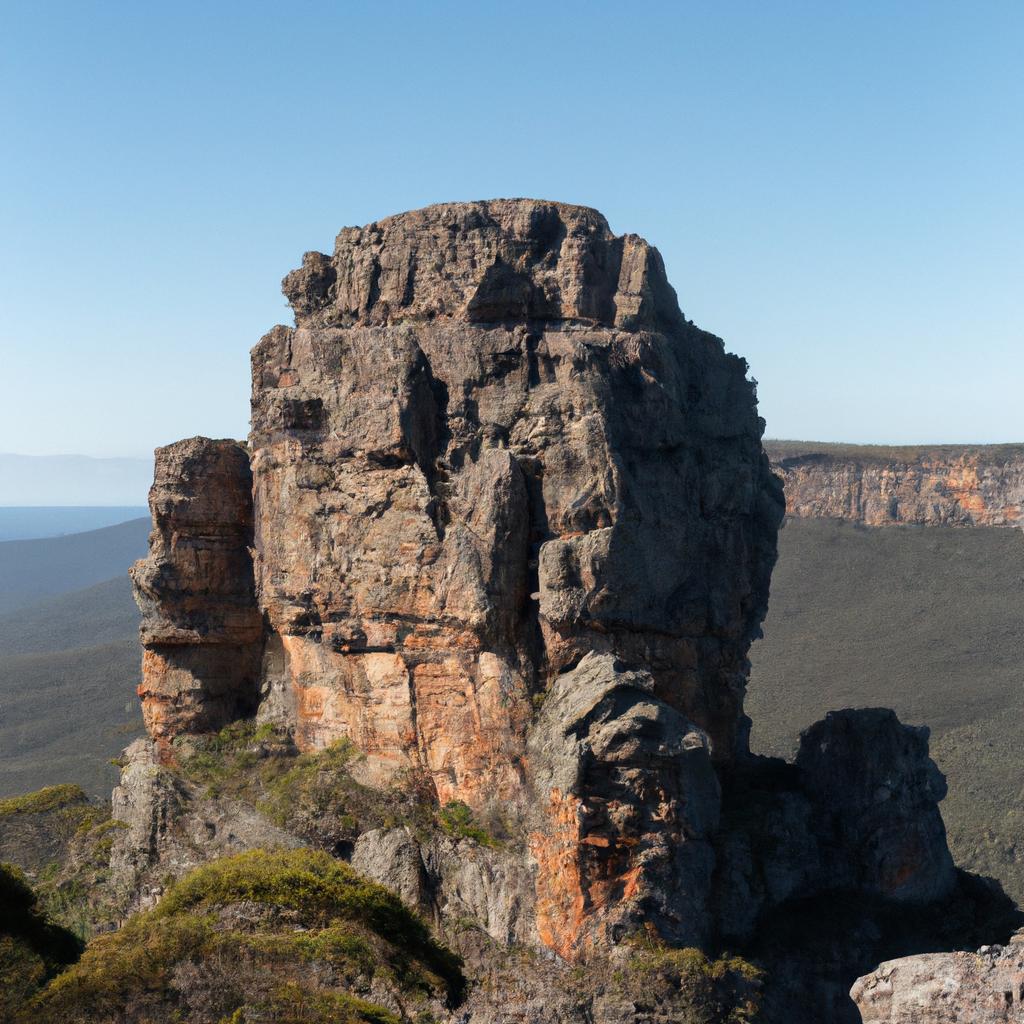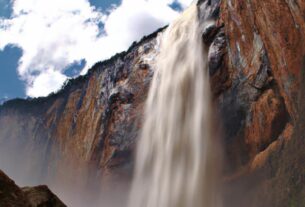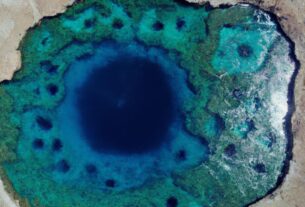Devils Tower, a breathtaking geological wonder located in Wyoming, USA, is not only a natural marvel but also a sacred site deeply rooted in Native American culture and spirituality. Legends surrounding the formation of Devils Tower have been passed down through generations, adding a touch of mystique to this extraordinary site. In this article, we will delve into the legend of Devils Tower while also examining the scientific explanation behind its formation.
Unveiling the Legend
According to Native American folklore, Devils Tower came into existence when a colossal bear used its mighty claws to etch deep grooves on the side of a mountain. As the bear relentlessly scratched the surface, its claws became lodged in the rock, leaving behind deep furrows. Despite its desperate attempts to break free, the bear eventually succumbed to the unyielding grip of the rock. The Great Spirit then transformed the bear into a constellation, immortalizing its legend in the form of the towering rock structure now known as Devils Tower.
Although variations of this legend exist among different Native American tribes, the core narrative remains consistent. The Lakota people, in particular, hold a profound connection with Devils Tower, viewing it as a sacred site called “Mato Tipila” or “Bear Lodge.” They believe it possesses potent spiritual energy that reverberates through the land.
The Science Behind Devils Tower
While the Native American legend of Devils Tower’s creation captivates the imagination, its scientific explanation offers a more plausible account. Geological history provides us with a remarkable insight into this fascinating formation. Roughly 50 million years ago, a massive volcano erupted, blanketing the surrounding terrain with ash and debris. Over millions of years, erosion eroded the softer sedimentary rocks, revealing the enduring igneous rocks that comprise Devils Tower.
Devils Tower is classified as a “laccolith,” formed when molten magma pushed its way through the earth’s crust, encountering a pliable layer of sedimentary rock. This encounter caused the rock to bend, giving rise to a dome-like shape. As the magma cooled and solidified, it crystallized into the distinctive igneous rock we see today. With the passage of time, erosion stripped away the softer sedimentary layers, leaving behind the majestic column of igneous rock that captivates us as Devils Tower.
Laccoliths like Devils Tower can be found in other parts of the world as well, such as the Giant’s Causeway in Northern Ireland and the Devil’s Postpile in California. The hexagonal shape of the tower’s columns is a result of lava cooling and contracting, causing cracks to form in a pattern reminiscent of honeycombs.
The Cultural Significance
Devils Tower has held profound importance in Native American spirituality and culture for centuries. Numerous tribes share a deep reverence for the site, considering it sacred and imbued with extraordinary power. The Lakota people, among others, believe that the tower possesses remarkable healing properties and serves as a conduit for connecting with their ancestors.
Today, Devils Tower remains a vital center for spiritual and cultural practices. Native American tribes continue to conduct ceremonies and rituals at the site, including vision quests, sweat lodges, and sun dances. Furthermore, the tower attracts curious visitors eager to learn about Native American culture and spirituality.
However, debates have arisen concerning public access to the site. Some Native American tribes advocate for restricted access due to the tower’s spiritual significance. Others advocate for a balanced approach, where visitors can explore the site while maintaining respect for its sacred nature. The National Park Service, responsible for managing Devils Tower, has collaborated with Native American tribes to develop policies that honor their cultural significance while ensuring public access.
Exploring Tourism and Recreation
Devils Tower National Monument is a popular tourist destination, drawing approximately half a million visitors each year. The park offers various amenities, including a visitor center, picnic areas, and a campground. For nature enthusiasts, hiking trails provide stunning vistas of the tower and its surroundings.
Rock climbing is a sought-after activity at Devils Tower, boasting over 200 routes suitable for climbers of all skill levels. However, climbers must obtain permits and adhere to strict guidelines that minimize their impact on the environment while respecting the spiritual significance of the site to Native American tribes.
While tourism generates valuable economic benefits for the local community, it also impacts the natural environment. To safeguard the site, the park has implemented measures such as restricting access to specific areas and encouraging visitors to follow designated trails. It is crucial for visitors to recognize their responsibility in preserving the site’s integrity and adhering to the rules and regulations in place, ensuring future generations can revel in the splendor of Devils Tower.
Preserving Devils Tower’s Legacy
In conclusion, Devils Tower stands as a remarkable geological formation with deep cultural and spiritual significance. While the legends surrounding its creation captivate our imagination, the scientific explanation provides invaluable insights into its formation. As visitors, we bear the responsibility of respecting and preserving Devils Tower for generations to come. By minimizing our impact and adhering to the regulations in place, we can ensure that this extraordinary site retains its natural beauty and cultural significance. Let us treasure Devils Tower for what it represents – a testament to the wonders of nature and the rich tapestry of Native American heritage.
To learn more about TooLacks and explore our range of offerings, visit our official website here.


